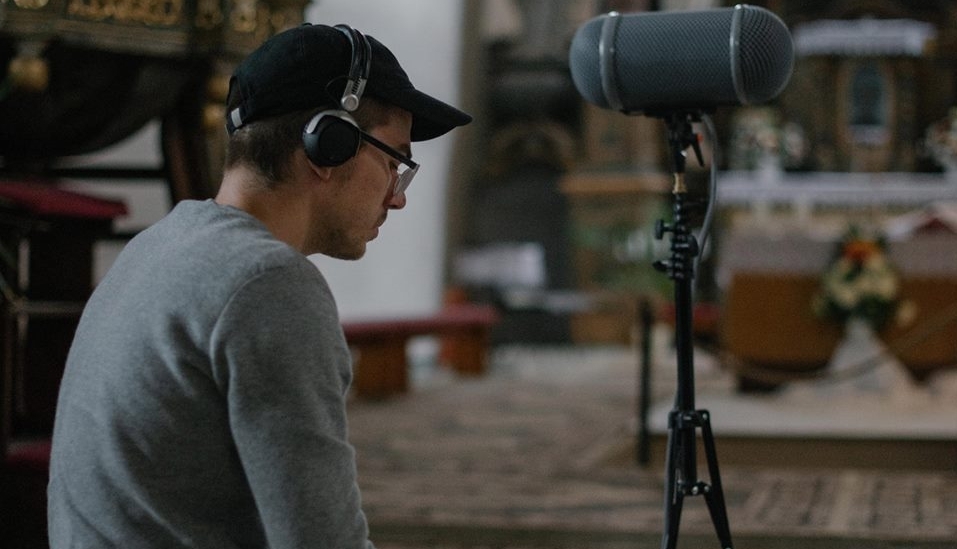Written by:
Jasmina Al-Qaisi
Edited by:
Andrei Crăciun
Share article:
Phonography from Bratislava
I am not here to emphasize the roots of field recording as an artform. That’s something I would also avoid when writing about the twin brother of phonography, photography. Let’s not go there. Instead, let’s talk about Bratislava, where mapping seductive underground intentions is taken good care of by Easterndaze.
Jonáš Gruska is a Sound Enthusiast & Field Recordist, a young man with an impressive resume, which looks like a lot of work .
Gruska has been making and recording sounds for quite some time now. He studied at Institute of Sonology in The Hague (Netherlands) and at Music Academy in Cracow (Poland) and as I suspect, he spends a lot of time online. You can catch him around setting up his site-specific installations for festivals or conducting workshops. But Gruska’s distinguishing feature is that he deals with the invisible: giving these workshops about his invention - Elektrosluch, the open-source device for electromagnetic listening that can allow people to explore the hidden sonic scapes of the environment. He held plenty of workshops around Europe in very special circumstances including Resonate Festivals in Belgrade and Cafe Oto in London. Besides the above mentioned activities and plenty of self-releases, Gruska is running a label dealing with “unknown or forgotten experimental artists” from Eastern Europe, LOM.
Spevy, the new album, is: gamelan orchestra, a cricket living in a pile of manure, a small town grasshopper, the liquid rhythm of wind and water, Apéritif glasses, custom stereo hydrophone inserted in the sink, stirring of a salted water in a cup, rumblings of a pontoon bridge at Dunaj river, cans hanged on a metallic rods, clanking in the wind to scare off the moles, Zorro the dog having his hair combed, playing on a piezoelectric film and a coffee machine, recordings of insects and birds, cast iron pot with water and dry beans recorded with a hydrophone, microphones in half-full soda cans, close-up recording of a train, ultrasonic frequencies emitted by insects and bats recorded using bat-detectors.
I wrote to you because of a T-shirt. The weather report expert from documenta 14 SAVVY Funk radio in Berlin, Gívan Belá was wearing your t-shirt. What have you guys been working on?
Jonáš Gruska: Oh, I am glad that our t-shirts have such powers! Currently we are working on a new type of microphone which would survive some harsh treatment. Throwing it around, running over it in a car, some water splashes. I feel like it could be quite helpful in some situations, giving you some expressive freedom as a sound artist. Oh and also new Elektrosluch!
Your invention, Elektrosluch the electromagnetic listening device, how do you explain to a kid what it does?
JG: Almost every electronic device has this “aura” around it. Scientists call it electromagnetic field. When it starts to change, we can treat it as sound – since sound is also a change... but in the air. Elektrosluch allows you to listen to this aura and discover it as a hidden dimension around us. You just plug in your headphones or a speaker, walk around and explore.
How do you make money for equipment? I mean I know you make your own equipment, but I can still ask how do you make money.
JG: Mostly by making microphones and other audio devices (such as the Elektrosluch). Part of my income comes from performing, doing workshops, field recording jobs and sound installations. But all of it is basically based in sound. I’m feeling really lucky that I am able to work in the experimental music field and don’t need to do a non-related job.

